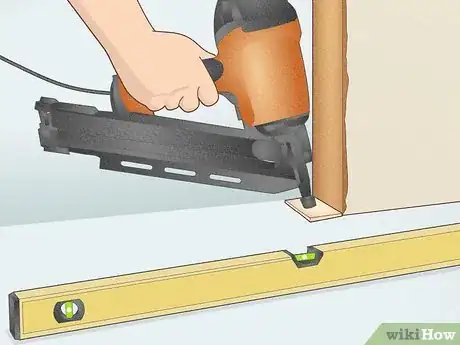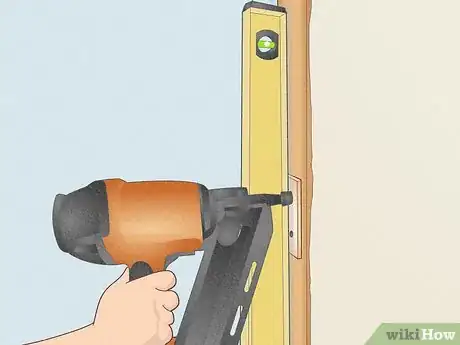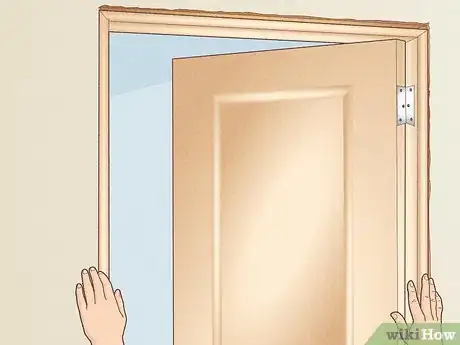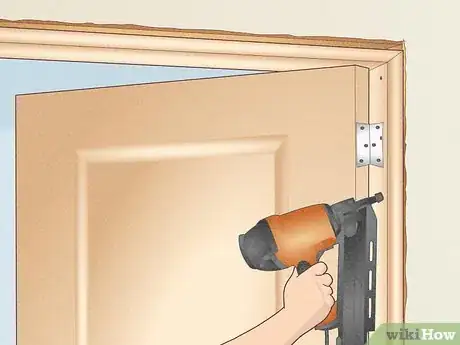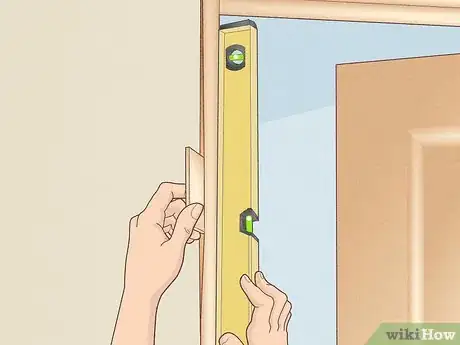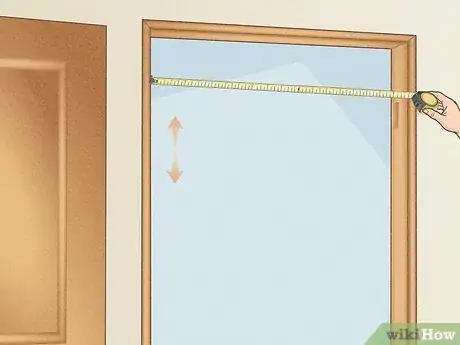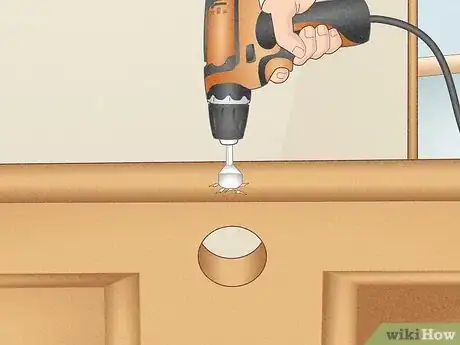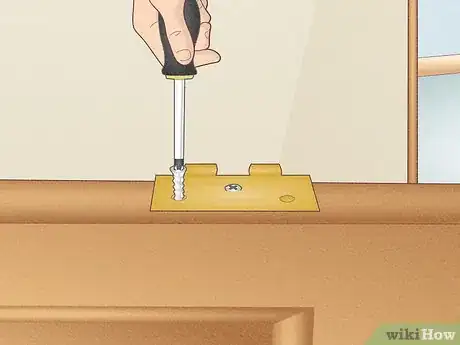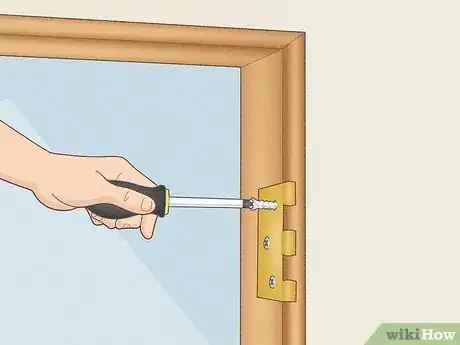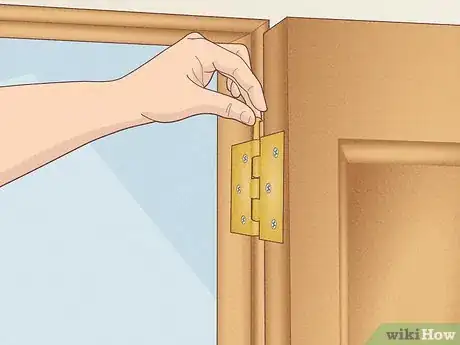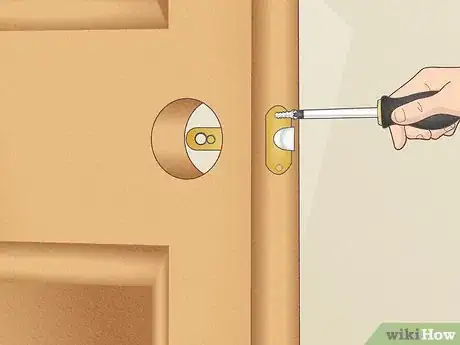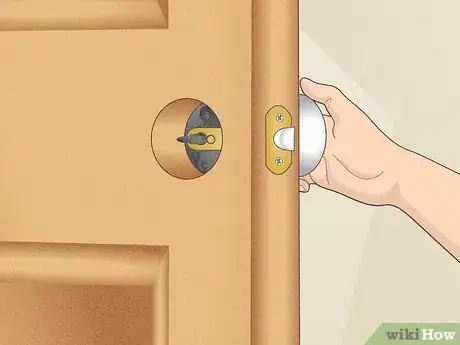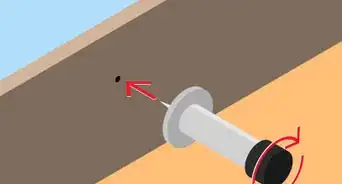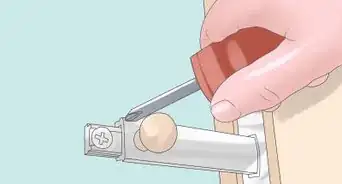This article was co-authored by Ryaan Tuttle and by wikiHow staff writer, Madeleine Criglow. Ryaan Tuttle is a Home Improvement Specialist and the CEO of Best Handyman, Inc. in Boston, Massachusetts. With over 17 years of experience, he specializes in building home service businesses, focusing on creating scalable and efficient brands. With the help of his global team, the companies have achieved over 10+ million in sales and received recognition through magazine features, and enjoy partnerships with wikiHow and Jobber field service software. Boston Magazine and LocalBest.com have named Best Handyman Boston the Best Handyman in Boston. Ryaan holds Construction Supervisor and Home Improvement Contractor Licenses.
There are 13 references cited in this article, which can be found at the bottom of the page.
This article has been viewed 58,737 times.
If home improvement isn't your specialty, installing a new door may seem like an impossible task. You may be surprised that with the right tools and information, it's really not that difficult. This article covers installing an interior, wooden door. Before you start, you've got 2 choices: a pre-hung door and a slab door. A pre-hung door comes with the hinges and even a doorframe already installed. A slab door is a door without hinges or a frame. Whether you're installing a pre-hung or slab door, we've got you covered. Plus, the latch and lockset installation are the same for either type.
Steps
Pre-Hung Door
-
1Make a rough opening for the door. A pre-hung door comes with an existing frame, so remove the old trim and frame first to make a rough opening for the new frame. Once that's done, use a level to make sure the floor is plumb (perfectly straight).[1]
-
2Install shims to level the floor if needed. Place the level on the floor. Determine if the hinge side is lower than the latch side. If it is, add shims underneath the level on the side nearest to the hinges. Keep adding shims until the floor is level. Use a finish nail to tack the shims in place.[2]
- You don't need to shim the floor if the latch side is lower.
Advertisement -
3Add shims to level the hinge side of the rough opening if it's not plumb. Line up your level on the hinge side first. Place shims underneath the level until it is plumb. Nail the shims in place.[3]
-
4Push the pre-hung door into the rough opening to see how it fits. Determine if it is flush, meaning that it lines up perfectly with the rough opening. To do so, push the door until it is right up against the rough opening.[4]
-
5
-
6
-
7Fasten the opening side of the doorframe to the rough opening. Hammer 8d finish nails through the frame, shims, and rough opening. This securely fastens the opposite side of the frame.[9]
Door Slab
-
1Measure the width and height of the doorframe and your door. Your doorframe will need to be 1⁄4 inch (6.4 mm) taller and wider than the new door. That way your new door will have room to fit within the space. Measure your new door to determine if it's the right size for the doorframe. Compare the length and width measurements to the doorframe, and make sure the door frame is 1⁄4 inch (6.4 mm) smaller in width and height.[10]
- Don't worry if the door is a little too big for the frame. You can adjust the size of your new door to fit.
-
2Cut the new door to size. Use a hand plane to trim the door’s width and height if it only needs to be trimmed less than 1⁄8 inch (3.2 mm). If the door needs to be trimmed more substantially, use a circular saw.[11]
- If you need to use a circular saw, use painter’s tape to mark where the door needs to be trimmed.
- When shortening the door’s height, cut at the bottom side of the door. If the width needs to be reduced, trim evenly on both sides.
-
3Score the door to place the lockset and hinges. Use the old door as a template to help. Remove the lockset and place the old door on top of the new door. Note where the hinges are located on the old door and mark the corresponding placements on the new door using a utility knife.[12] Next, use a pencil to trace where the knob was located on the old door. Mark where the old latch was located as well. Trace its shape on the new door.[13]
- This makes 2 circles that correspond to the doorknob and latch on the new door.
- To really ensure exact measurements, clamp the two doors together.
- Use a utility knife for scoring to make sharp, clean lines.
-
4Drill a hole the size of the circle you've marked on the new door. Use a hole saw to drill halfway through the door and then stop. Flip over the door and drill the rest of the way through the hole on the other side.[14]
- Turning over your door halfway through helps you avoid splinters and encourages clean, sharp cuts.
-
5Use a spade bit to drill the hole for the door latch. To make this easier, place the new door on its verticle edge. Drill the hole in the exact circular shape that you marked for the new latch. It needs to be exact so that the latch functions correctly.[15]
- After you’ve drilled the hole, temporarily secure the latch and faceplate into the door to make sure it all fits.
-
6Chisel out spaces to secure the door hinges and doorknob faceplate. Use the marks you made with your utility knife as a guide. Keep the bevel of your chisel down and gently tap it with a hammer. Remove the wood to correspond with the space you’d marked earlier.[16]
- Make sure to get rid of any splinters or remaining wood to ensure a clean space for the new hinges and faceplate.
-
7Screw half of the hinges into their corresponding mortises. This half is the portion that includes the inner knuckles. Use a center punch to screw the hinge leaves to the door in their correct mortise placements.[17]
-
8Screw the other half of the hinges onto the door frame to secure the new door. Make sure the placement corresponds exactly to the placement of the hinge leaves and knuckles on the door. If it doesn't, adjust the hinge leaves and knuckles until they fit together securely.[18]
-
9Hang the door in the frame. First, position your door to correspond with the hinges in the doorframe. Fit the knuckles on the new door within the hinges that are screwed to the door jamb.[19] Hang the new door by dropping in the hinge pins. Place the hinge pins within the corresponding place in the hinges. Use a hammer to secure them in place.[20]
- If the hinge knuckles don't fit within the hinges on the door jamb, you may need to adjust the placement of the hinges on the new door.
Latch and Lockset
-
1
-
2Secure the connecting rod of the doorknob to the hole in the latch. This will be used to connect both sides of the doorknob on either side of the door. Place the other side of the doorknob on top of the corresponding screw holes to line them up perfectly.[23]
-
3Screw both sides of the doorknob in place. Use the screws that came with your new doorknob. Tighten them in place with a hand screw. That way you won't over-tighten the doorknob and risk it not working properly.[24]
- Test out how the doorknob twists and controls the latch. Make sure the latch still moves with the doorknob.
Expert Q&A
-
QuestionHow do I measure for a new door slab?
 Ryaan TuttleRyaan Tuttle is a Home Improvement Specialist and the CEO of Best Handyman, Inc. in Boston, Massachusetts. With over 17 years of experience, he specializes in building home service businesses, focusing on creating scalable and efficient brands. With the help of his global team, the companies have achieved over 10+ million in sales and received recognition through magazine features, and enjoy partnerships with wikiHow and Jobber field service software. Boston Magazine and LocalBest.com have named Best Handyman Boston the Best Handyman in Boston. Ryaan holds Construction Supervisor and Home Improvement Contractor Licenses.
Ryaan TuttleRyaan Tuttle is a Home Improvement Specialist and the CEO of Best Handyman, Inc. in Boston, Massachusetts. With over 17 years of experience, he specializes in building home service businesses, focusing on creating scalable and efficient brands. With the help of his global team, the companies have achieved over 10+ million in sales and received recognition through magazine features, and enjoy partnerships with wikiHow and Jobber field service software. Boston Magazine and LocalBest.com have named Best Handyman Boston the Best Handyman in Boston. Ryaan holds Construction Supervisor and Home Improvement Contractor Licenses.
Home Improvement Specialist All you have to do is measure the width and the height of the opening that's there, or you can just measure the original door if you have that.
All you have to do is measure the width and the height of the opening that's there, or you can just measure the original door if you have that.
Things You'll Need
- Interior wooden door slab or pre-hung door
- Level
- Shim
- 8d finish nails
- Tape measure
- Circular saw
- Painter's tape
- Utility knife
- Hole saw
- Spade drill bit
- Chisel
- Center punch
- Hammer
- Lockset
- Hinges
- Screws
References
- ↑ https://www.thisoldhouse.com/doors/21016350/how-to-install-a-prehung-door
- ↑ https://www.thisoldhouse.com/doors/21016350/how-to-install-a-prehung-door
- ↑ https://youtu.be/ZAkGt7xvDUg?t=201
- ↑ https://youtu.be/ZAkGt7xvDUg?t=239
- ↑ https://www.thisoldhouse.com/doors/21016350/how-to-install-a-prehung-door
- ↑ https://youtu.be/ZAkGt7xvDUg?t=282
- ↑ https://youtu.be/ZAkGt7xvDUg?t=375
- ↑ https://www.thisoldhouse.com/doors/21016350/how-to-install-a-prehung-door
- ↑ https://www.thisoldhouse.com/doors/21016350/how-to-install-a-prehung-door
- ↑ https://www.thisoldhouse.com/doors/21016617/how-to-hang-an-interior-door
- ↑ https://www.thisoldhouse.com/doors/21016617/how-to-hang-an-interior-door
- ↑ https://www.ronhazelton.com/projects/replacing-interior-doors-learn-to-do-it-yourself
- ↑ https://youtu.be/xcpC2twjeX0?t=223
- ↑ https://www.ronhazelton.com/projects/replacing-interior-doors-learn-to-do-it-yourself
- ↑ https://www.ronhazelton.com/projects/replacing-interior-doors-learn-to-do-it-yourself
- ↑ https://www.ronhazelton.com/projects/replacing-interior-doors-learn-to-do-it-yourself
- ↑ https://www.thisoldhouse.com/doors/21016617/how-to-hang-an-interior-door
- ↑ https://www.thisoldhouse.com/doors/21016617/how-to-hang-an-interior-door
- ↑ https://www.thisoldhouse.com/doors/21016617/how-to-hang-an-interior-door
- ↑ https://www.ronhazelton.com/projects/replacing-interior-doors-learn-to-do-it-yourself
- ↑ https://youtu.be/Qr-KBk_5Pys?t=10
- ↑ https://youtu.be/Qr-KBk_5Pys?t=42
- ↑ https://youtu.be/Qr-KBk_5Pys?t=51
- ↑ https://youtu.be/Qr-KBk_5Pys?t=67
- http://www.thisoldhouse.com/toh/how-to/intro/0,,216214,00.html
About This Article
To install a door using brackets, start by removing the old door and trim. Next, screw three brackets to the back of the door frame, right next to the hinges, and screw the other three brackets on the latch side of the door. Then, starting with the top hinge and working your way down, screw the door to the wall with drywall screws. Finally, add the remaining screws to the brackets on the latch side before installing the new trim. For tips on using shims instead of brackets, read on!

